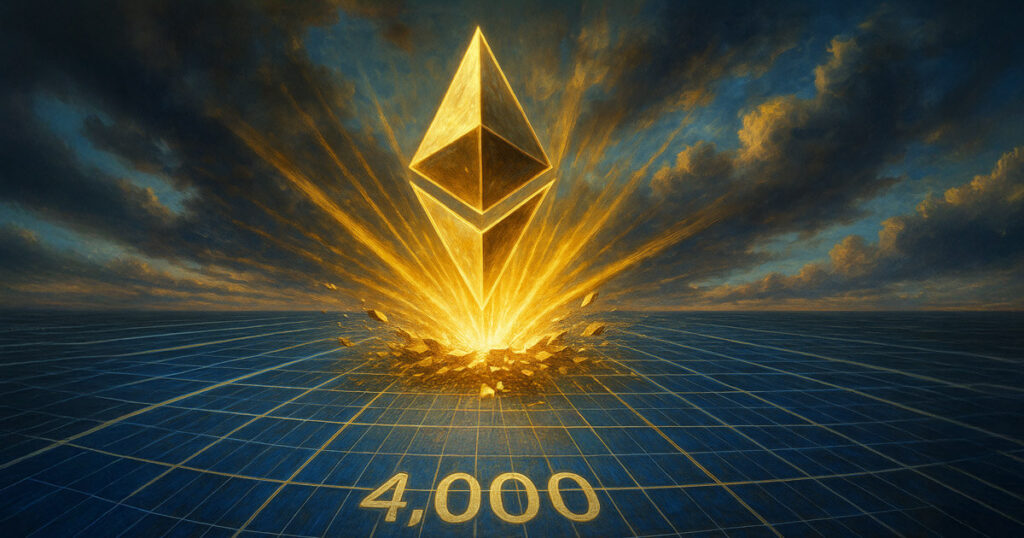Ethereum is facing a tense standoff around the $4,000 price mark, capturing the attention of traders and long-term investors alike. Over the past week, Ether has bobbed within a narrow range as low gas fees, fading enthusiasm for Ethereum exchange-traded funds (ETFs), and broader macroeconomic uncertainty keep the market in a state of cautious observation.

The $4,000 threshold is not only a psychological benchmark but also a technical level that reflects shifting supply and demand dynamics. Ethereum’s ability to hold near this mark, despite subdued trading volumes, highlights the tug-of-war between bullish and bearish forces.
One of the key factors shaping the current landscape is unusually low gas fees. Traditionally, rising on-chain activity drives transaction costs higher, signaling strong network demand. Recent declines in fees suggest a slowdown in decentralized finance (DeFi) usage and NFT transactions. While lower fees make Ethereum more attractive to users, they also indicate reduced economic activity on the network—a mixed signal for market participants assessing long-term growth.
Another influential element is ETF demand, which has cooled after an initial surge of interest. Ethereum ETFs were expected to bring significant institutional capital into the market, mirroring Bitcoin’s experience. However, flows into these funds have been weaker than anticipated, leaving traders questioning whether the launch excitement can sustain upward price momentum. A rebound in ETF inflows could provide a much-needed catalyst for Ethereum to break decisively above $4,000.
Adding to the uncertainty are macro factors such as fluctuating interest rate expectations, regulatory discussions, and broader risk sentiment across global markets. Cryptocurrencies often respond to shifts in economic data and central bank policies, and Ethereum is no exception. Traders remain sensitive to any signals that could impact liquidity or investor appetite for risk assets.
Despite these headwinds, Ethereum’s stability near $4,000 demonstrates a degree of resilience. Developers continue to advance scaling solutions and upgrades to improve efficiency and reduce costs, strengthening the network’s long-term fundamentals. Investors with a longer horizon may view the current consolidation as a strategic accumulation period, while short-term traders watch closely for technical breakouts or breakdowns.
Takeaway
Ethereum’s week-long standoff at $4,000 underscores a market balancing act between positive network fundamentals and cooling investor enthusiasm. Low gas fees, weaker ETF flows, and macroeconomic uncertainty may delay a breakout, but they also set the stage for potential volatility once a decisive catalyst emerges. For now, traders and investors remain alert as Ethereum navigates this critical price zone.
